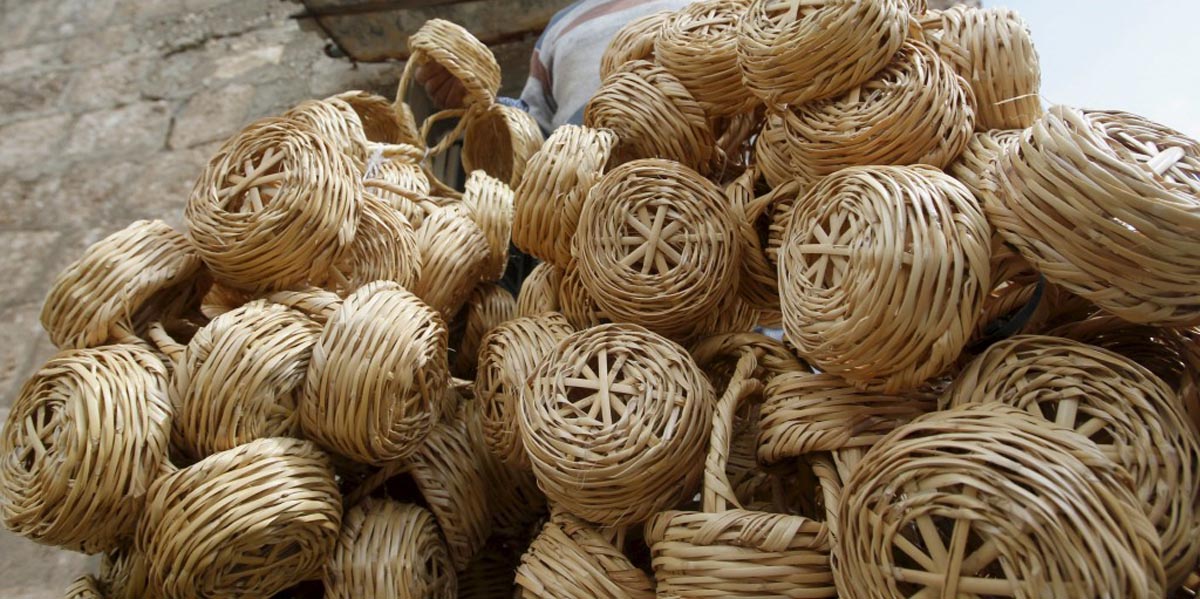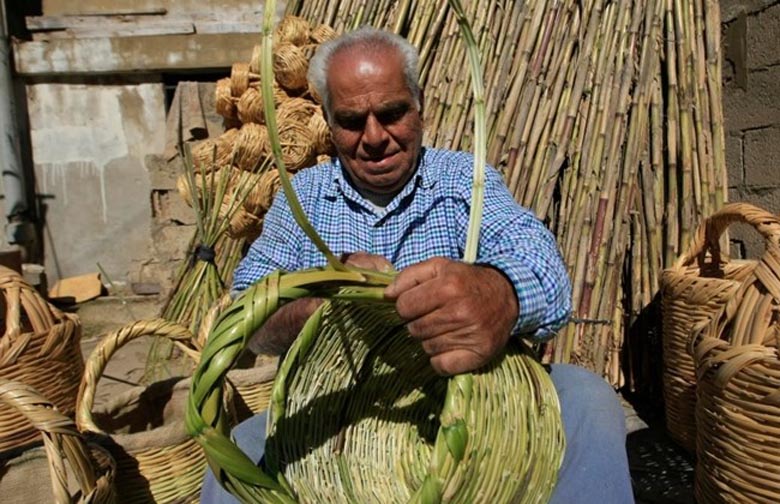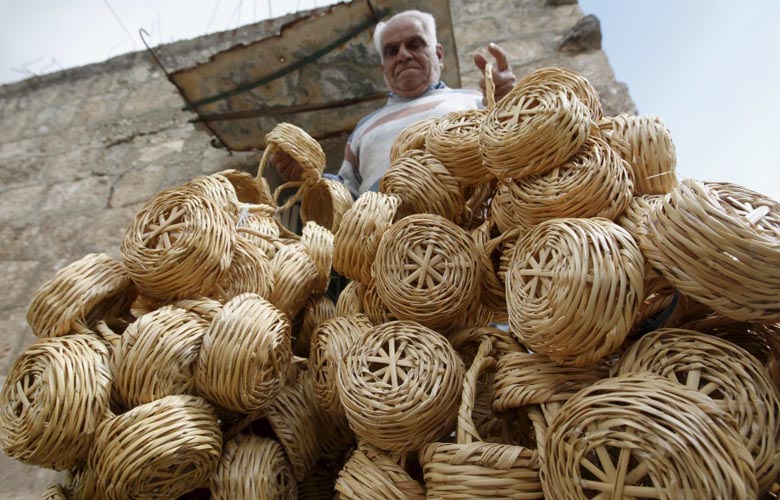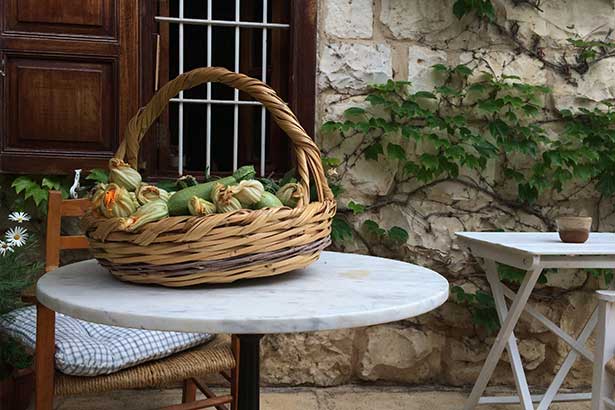There’s a distinct nostalgia attached to traditional Lebanese hand-woven basket crafts, which are often seen piled up for sale along the coastal roads of the country. From the coastal towns of the north to the mountainous villages of Lebanon, basket-making is rooted in Lebanese tradition. We discover more with the Lebanese Ministry of Tourism.

Photo – 365 days of Lebanon
Visit Saida or Tyre and you’ll see the baskets’ connection to the sea, where they have a strong presence in the harbor, filled with fishing nets or used to carry the morning’s catch. In rural parts, these rustic baskets were used to carry figs, olives, and fruits during harvesting season, or flat woven circular mats were used to dry keshek on the roofs of houses in mountain villages.
Beyond the rural regions of Lebanon, traditional baskets also found their purpose in daily urban life. Visit the old neighborhoods of Beirut and see baskets dangling down from the high balconies of crumbling heritage buildings. These woven vessels await the shop owner’s goods.
In Lebanon, the two types of basket weaving stretch back centuries. One is made from woven reeds, and is common all across the region and sold cheaply; the other is a rarer tradition unique to Amchit, made from woven palm leaves.
The basket-making techniques and uses, vary by region. In Al-Kouachra, 3km from the northern border with Syria, halfah (esparto grass) is used to create multicolored mats and trays. In Hermel, prayer rugs are weaved from colored corn straw. In villages such as Zgharta and Bcharre in the North, Kefraya in the Bekaa, and Saida in the South rougher braided cane or wicker are woven to create larger baskets for the transportation of fruits.

Photo – 365 Days of Lebanon
Amchit itself developed its own version of basket weaving using palm leaves, a softer more delicate technique that is a time-consuming art, made entirely by hand. It can take hours to prepare which is why it was once a common tradition in these slow-moving sleepy seafront communities.
Architect and designer Mona Yazbek, who lives in Amchit, is something of an expert in the tradition of basket weaving, specializing in the rare art of weaving from palm leaves. She first became interested in the Amchit tradition for its long past and the potential for its form to evolve and find a place in contemporary crafts. Almost a decade ago, she began to work with weavers to develop modern designs and play with the form. Yazbek believes the tradition of basket weaving in Amchit stretches back to the 19th Century.

The people of Amchit were traders, they would travel across the region from Iraq and Syria to Egypt and trade in dates and the oriental butter samneh, or ghee [clarified butter with a rich taste].They also brought back the art of weaving from Basrah, in Southern Iraq. In Amchit there were lots of palm trees; the horizon was full of them. Now we still have many but there used to be much more. It was natural for this art to begin.

The palm weaving of Amchit is unique in the Mediterranean for its simplicity. First, the palm leaves are dried before being cut and prepared. Next, they are woven and sewn together, depending on the shape.
If you compare the weaving of Amchit with the [other] types that exists in the Mediterranean, Iraq, and Syria, it’s the same weaving. But somehow in these places it’s still a practical use for everybody. It takes the shapes and colors that they lost here. They have a simple way of doing it.
Though the coastal road of Amchit is still lined with humble shops selling baskets, it’s now a struggle to find artisans still working on the palm-leaf basket weaving in the town, once the epicenter in Lebanon for the tradition.
Article published on September 10, 2021.
Article edited on October 2nd, 2021.
Loading
